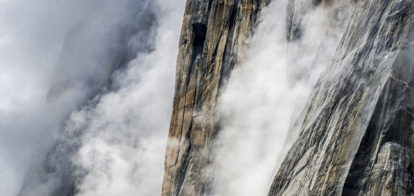Bring Back Clean Climbing
Fifty years ago, Yvon Chouinard, Tom Frost and Doug Robinson set down an ethic for climbing that emphasized restraint and respect for the rock. In 2022, it’s needed more than ever.
“It was a total failure.”
In the early ‘70s, the Chouinard Equipment catalog advocated for a new kind of climbing, one that called for restraint in order to protect the rock. Rather than using brute force to climb routes by any means necessary, Yvon Chouinard and others argued that good style mattered more than the send. They called it “clean climbing.” Practically speaking, clean climbing would replace pitons and other bash-in gear with chocks and hexes, new kinds of protection that were easily removed and less damaging to the rock. But the more ambitious goal of clean climbing was to encourage an ethic where the climber relied on their judgment and skill, rather than gear, and left no evidence of their ascent. Emerging around the same time in the United States and Europe, clean climbing soon changed the way climbers protected routes. But when asked today what effect the movement had, Chouinard is unequivocal: “The only appropriate answer is zero.”
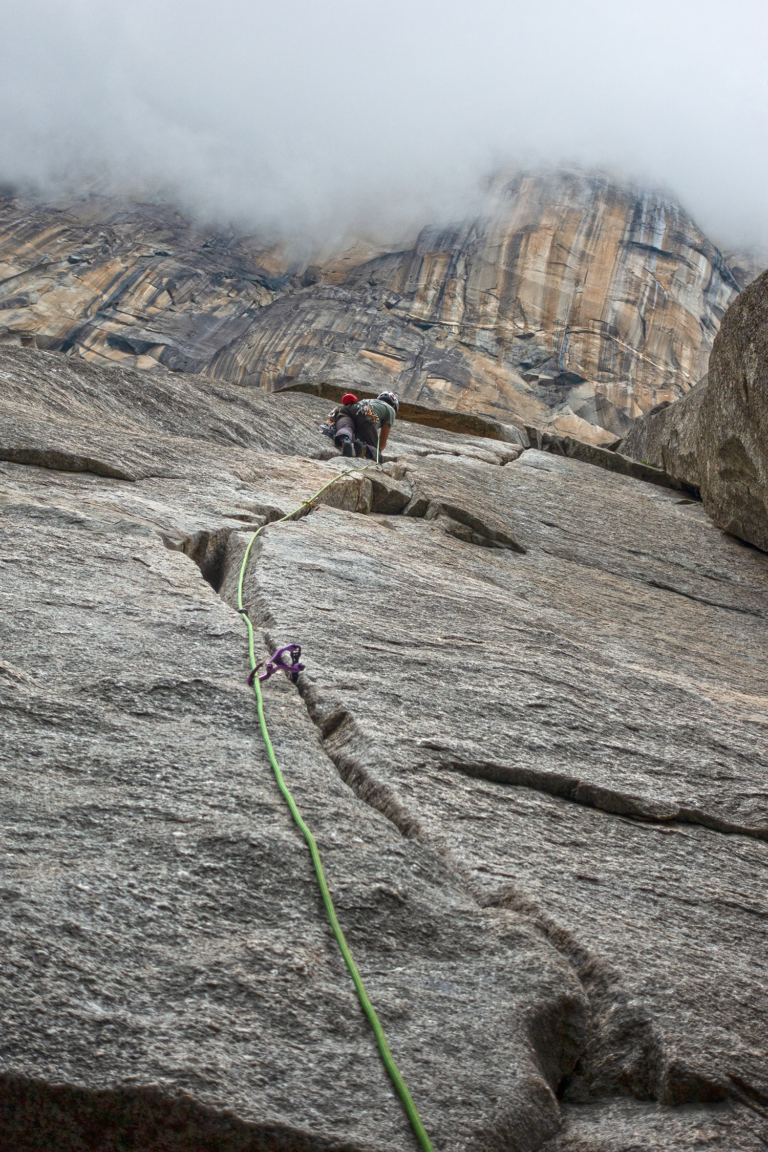
Scott Bennett ventures into a stormy sea of granite. Yosemite National Park, California. Photo: Eliza Earle
You don’t have to look far to see what he means. If clean climbing was about leaving no trace of our passage, the modern climbing crag is a far cry from this ideal. Sure, any climber caught with a hammer or chisel is likely to get dragged by social and outdoor media, but you can hardly approach a popular crag or bouldering area and claim that climbers are low-impact. Chalk splotches dot the most popular way up a climb (“Paint by the numbers,” Chouinard says). Tree branches inconveniently hanging over boulders one day go missing the next, if the tree doesn’t disappear entirely. Ignorant climbers place bolts on sacred Indigenous petroglyphs and rock formations, drag their pads over fragile desert flora or stomp across ancient grinding holes and mortars. If clean climbing were indeed the dominant ethos of climbing today, we would not see the requisite crag cleanup day at every outdoor event. We would not need to remove hundreds of pounds of garbage and abandoned climbing gear every year at the Yosemite Facelift.
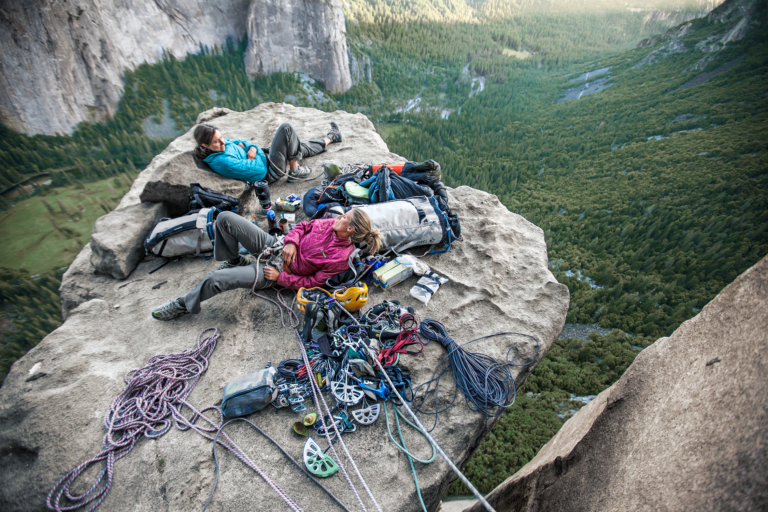
There are no free rides on Freerider—Kate Rutherford and Madaleine Sorkin take a brief reprieve before the next section. Yosemite National Park, California. Photo: Mikey Schaefer
At the same time, the influence of clean climbing seems clear. Even if they don’t always live up to the ideal, climbers have broadly adopted “leave no trace” principles despite ongoing debates about when to bolt, if ever, how to deal with questionable rock or how much “gardening” is permissible. Nowadays, no climber hopes to leave any gear behind, and the overwhelming majority of climbers never have, and never will, use pitons. What was once the primary mode of protection has been pushed far to the fringes of alpinism, if not directly into the museum case. Removable protection, or pro, provides such clear advantages for the climber that most consider pitons relics of a dark past.
So why is Chouinard so certain that clean climbing was a total failure?
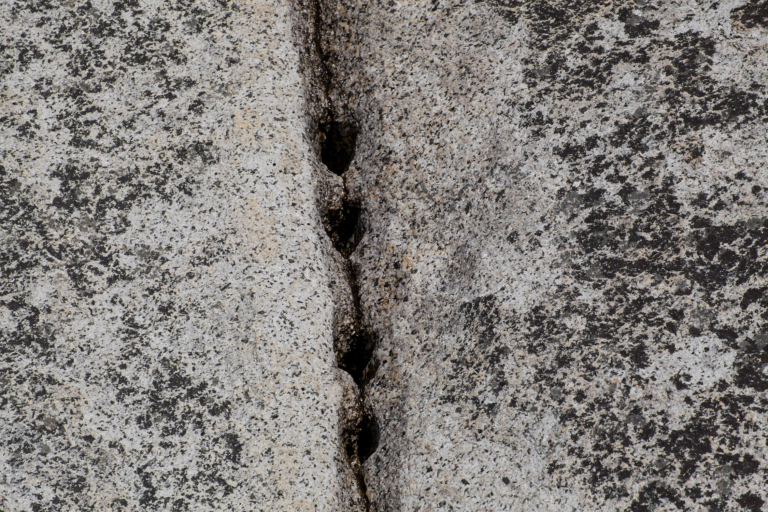
Pin scars in Yosemite National Park. Removing pitons preserved the difficulty of the route for the next climber, but it caused irreparable damage to the rock. Photo: Dean Fidelman
To get a fuller sense of the lasting influence—or failures—of clean climbing, let’s rewind to the golden age of rock climbing in the United States, the 1950s and ‘60s. Some of the best and boldest climbers dropped out of the postwar consumerist rat race to live simply, cheaply and quasi-legally among the forests and cathedrals of stone. These early explorers took mountain climbing to sheerer and steeper faces. But while techniques evolved to account for increasingly vertical ambitions, the tools remained relatively unchanged. At the time, a climber’s rack could include many pounds of metal pitons to hammer into rock faces to protect against a fall. In the ethic of Yosemite Valley and elsewhere, these pitons would be removed to preserve the difficulty of the route for subsequent climbers. Decades of this method produced hundreds of pin scars in cracks all over the country, and especially all over the Valley. Perhaps the most infamous marring is the first pitch of Serenity Crack, which is recognizable to this day by the heinous string of irregular bores punched along its length. Photographs of the route circulated in the early ‘70s among the climbing community, like the aftermath of a horrific car crash caught on camera. Something had to be done.
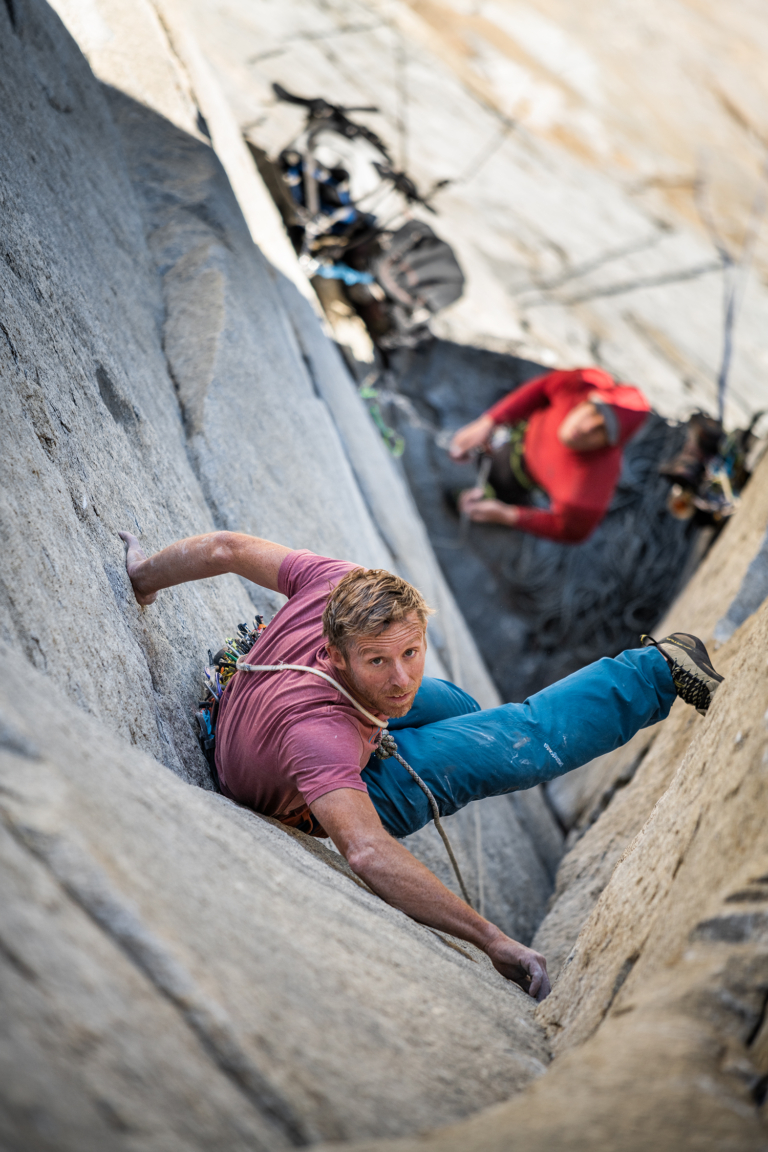
Tommy Caldwell works through the “easy” part of pitch 23 on Passage to Freedom. Yosemite National Park, California. Photo: Austin Siadak
Chouinard had been forging his own pitons since 1957. By 1970 his company, Chouinard Equipment, was the premier climbing gear manufacturer in the United States, and pitons were by far its best-selling product. But in 1972, Chouinard and his business partner, Tom Frost, opened the Chouinard Equipment catalog with an essay urging readers to stop using pitons. “Mountains are finite,” Chouinard and Frost wrote, “and despite their massive appearance, they are fragile.” A 14-page article by Doug Robinson—part how-to, part manifesto for clean climbing—followed.
They argued the point of climbing was to form a deeper communion with oneself and nature, and to preserve the environment and challenge for climbers to come. “We believe the only way to ensure the climbing experience for ourselves and future generations is to preserve (1) the vertical wilderness, and (2) the adventure inherent in the experience,” Chouinard and Frost explained. If you couldn’t climb a route under your own power and without harming the rock, then you had no business climbing the route until you could. Clean climbing asserted that mountains and rock faces were not objectives to be conquered but places to approach with respect. Switching to a new kind of pro supported this perspective: “To place a nut you must begin by thinking about the shape of cracks,” Robinson wrote. “Right from the start clean climbing demands increased awareness of the rock environment.”
Before nuts and chocks were popularized, it was normal for climbers to expect their gear could help them ascend a route. Clean climbing urged that gear only be used as protection from falls; a climber’s technique, strength and awareness brought them up. This was “free” climbing, and while the concept existed prior to the clean climbing movement, clean climbing pushed it from a style of climbing to the style.
Chouinard and his cohorts reasonably expected that clean climbing would re-center self-reliance, boldness of vision and humility before the natural world by removing the possibility, both ethically and practically, of a mediated experience. But that’s not what happened. Clean climbing succeeded in drawing new boundaries for what constitutes a fair ascent, but it did not succeed in eliminating destructive gear. In certain respects, it was even a victim of its own success.
The shift to removable pro ultimately led to sport benefits that for many were too clear to deny—more technical, more dynamic and, arguably, more interesting climbing. The further you get from having to think about bashing in pro, the more you can prioritize movement. And if you don’t have to place pro at all, as in sport climbing, then you can isolate movement even more.
Though Olympic gold medals were awarded for alpinism between 1924 and 1936 (several posthumously), the International Olympic Committee decided to stop recognizing mountaineering achievements in 1946. This irresolute legacy is in stark contrast to sport climbing’s successful debut in the 2020 Olympics, which confirmed Chouinard’s verdict that sport climbing is merely that—a sport. It might be more athletic, but it lacks real risk and doesn’t require grappling with a changing environment, elements that set clean climbing apart.
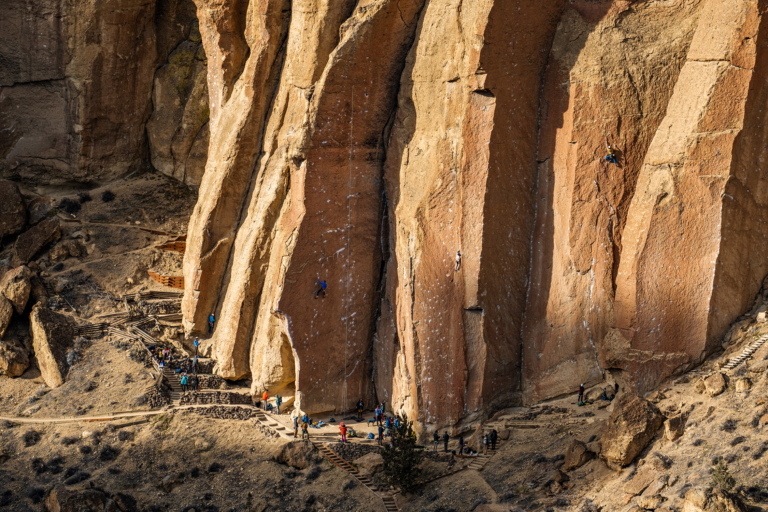
Guess where the next hold is? On popular routes like these in Smith Rock State Park, Oregon, chalk marks don’t leave much to the imagination. Which is why a few wags have taken to chalking the wrong holds to remind fellow climbers to think for themselves. Photo: Austin Siadak
Of course, relative safety and control are essential to pushing the physical limits of hard climbing. While the boldness of ground up, on-sight free ascents maintain their place at the pinnacle of climbing accomplishments, a successful on-sight is never done at your peak climbing potential. Peak grades demand precision, strict training protocols and carefully calibrated diets. Beta videos on the internet ensure you don’t waste time or precious energy figuring out a sequence for yourself. Holds are brushed and moves rehearsed on top rope. All grade-chasers are scientists, removing as many variables as possible in order to improve the probabilities of a successful send. Even some of the most celebrated free solos are performed after obsessive research, training and rehearsal on gear. For some, “clean” is distilling climbing down to a contest between the climber and the rock, the greatest challenges met by eliminating the unknown rather than embracing it. Exploration has been left by the wayside and with it the preeminence of the environments that define it. True adventures are not efficient.
It makes sense that the highly rehearsed and tightly controlled athletic climbing objective would be the primary result of the clean climbing movement. According to Robinson, few took up the clean climbing call because it was the right thing to do. “A moral imperative is an OK human motivator,” he says, “but the best one is excitement. It was a good challenge, […] knowing that nuts can fall out behind you while you’re quivering on lead. Can we do this? Can we pull this off? And nobody knew, at first.”
Yet, testing whether the purity of clean climbing today holds up to the aspirations of clean climbing 50 years ago misses the point. For all its human faults and fractures, the spirit of modern-day climbing is expansive, welcoming and quick to affirm that anyone who loves climbing is a climber. If we laud the climbing community for this warmth, then we can hardly claim that risking one’s life in pursuit of purity is the only worthy form of climbing. The value of clean climbing today is its provocation to examine what we want to get out of climbing, and what we should. It challenges climbers to remember that this rather selfish, occasionally solitary pursuit affects others, and there is a deeper and more meaningful experience to be found by meeting this challenge instead of singularly focusing on the desire to summit.
Clean climbing is more than an abstract argument; it draws a straight line from ethics to policy. In 1998, the American Alpine Journal published an article by Chris McNamara on the future of Yosemite rock climbing in which he said, “Since Doug Robinson first wrote of it in the 1972 Chouinard catalog, clean climbing has been the right thing to do. It still is; but increasingly, if climbing is to endure, it is the necessary thing to do as well.” McNamara’s claim rings especially true now: In May 2021, the National Park Service began requiring backcountry permits for multiday climbing trips in Yosemite, a direct response to the abandoned trash and equipment climbing rangers encountered every day, for years. Access and environmental care directly correspond with care for the other, something that can, and must, be extended more broadly—and not just for the sake of climbing in wild spaces.
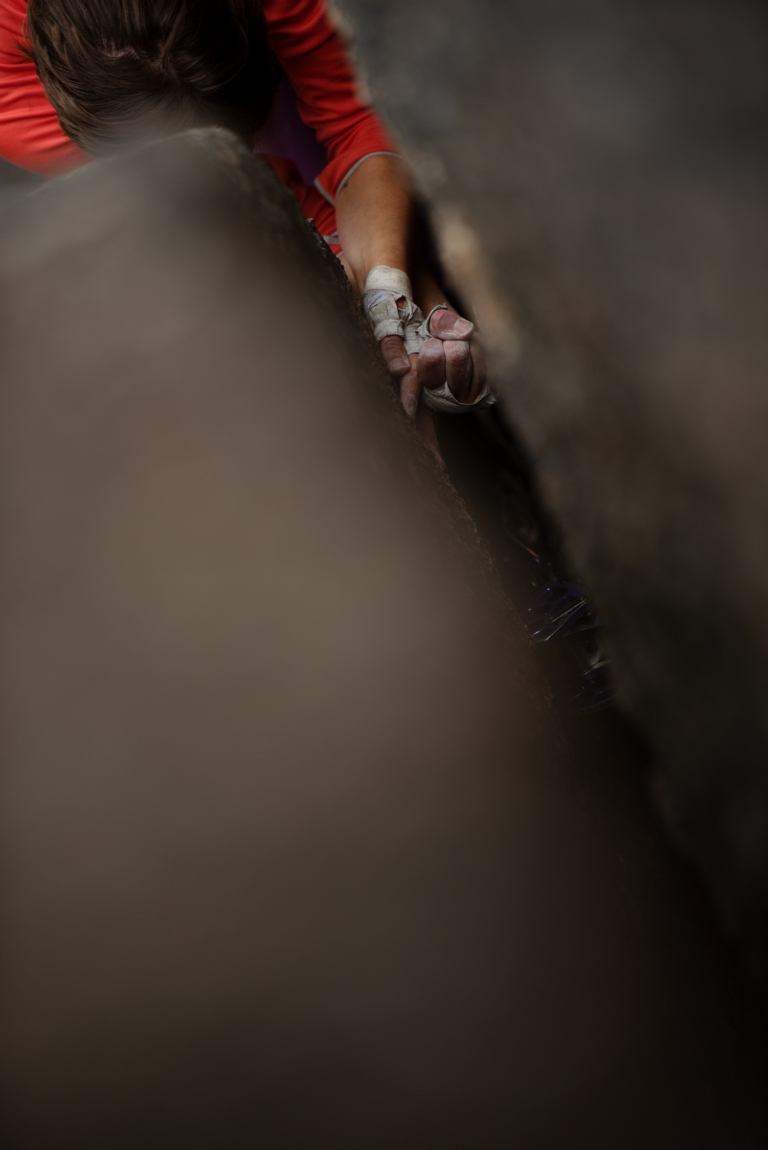
Clean climbing gets gritty. Birch Malotky secures a stack on Black Crack. North Conway, New Hampshire. Photo: Brent Doscher
The war in Vietnam, the Stonewall Riots, the assassination of Martin Luther King Jr., the rise of second-wave feminism … 1972 may have seen the (short-lived) reelection of Richard Nixon, but it also brought more political and cultural upheaval, and self-described dirtbags like Chouinard and Robinson opted out of it. “We weren’t resisting anything; we were just living our lives,” Chouinard says. Yet for others, simply living their lives was, and still is, a form of resistance, and opting out is not an option. The consequences for refusing to conform to society are radically different—even violently different—across communities and identities. Chouinard is right: Refusal is not the same as resistance. But for those of us with the freedom to refuse, choosing clean climbing is an opportunity to opt in, to take the perspective of Chouinard and his cohorts and turn it toward the wider world.
Clean climbing tells us that we can stop doing the things that damage our environment or degrade the experiences of other climbers, and in stopping, we can find a better way for everyone. Clean climbing is a new form of old wisdom, one that considers others and our impact upon them. As Robinson wrote in his essay, “The best way to start climbing clean is to relearn climbing itself from the ground up.”

First light on The Nose of El Capitan. Yosemite National Park, California. Photo: Drew Smith
Clean climbing is harm mitigation. But harm mitigation is not sexy; it’s an acceptance of reality. To some, that acceptance is itself an admission of failure. The reality of our humanity, the basic fact that everything we touch bears our trace, is a failure. Clean climbing recognizes this reality and challenges us to be intentional about what traces we leave behind. As Indigenous people have known all along, and as some of us have come to learn belatedly, all our lives and all these spaces—the sacred and profane, urban and wild—are connected. Walking away from one means walking away from the other.
Like all movements, clean climbing is a verb. It is a practice that must be performed, renewed and recommitted to. Clean climbing means restraint in the face of our egos and humility in the face of nature, an effort of self-mastery rather than world domination. These are the ideas that inspire us, the excitement that we need to face the challenge of saving our home planet. Because if there is one place we cannot fail, it is here. Can we do this? Can we pull this off? Nobody knows, for now—there’s only one way to find out.

Noel Cockney and Brett Carroll on the final vertical pitch of Arrowhead Arête. Mark Powell and Bill Feuerer did the first ascent all-free in 1956, hinting at what would be possible for the future of climbing. Yosemite National Park. Photo: Eric Bissell
Go deeper: Read the original essay that inspired this story, “A Word …” by Tom Frost and Yvon Chouinard, republished in commemoration of the 50th anniversary of the 1972 Chouinard Equipment catalog.
